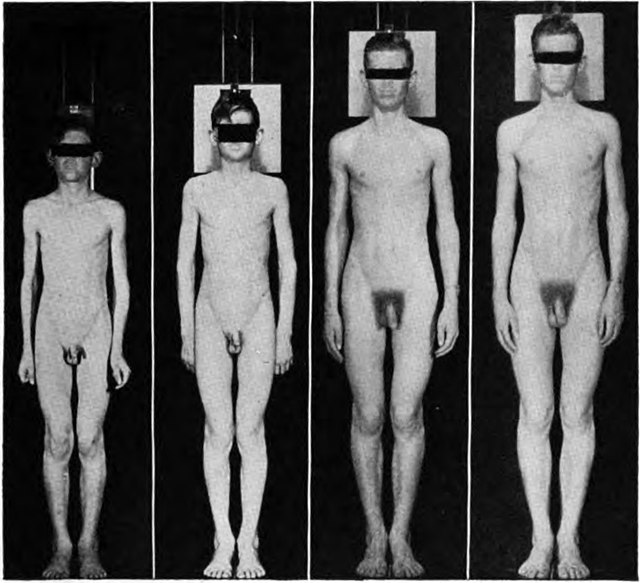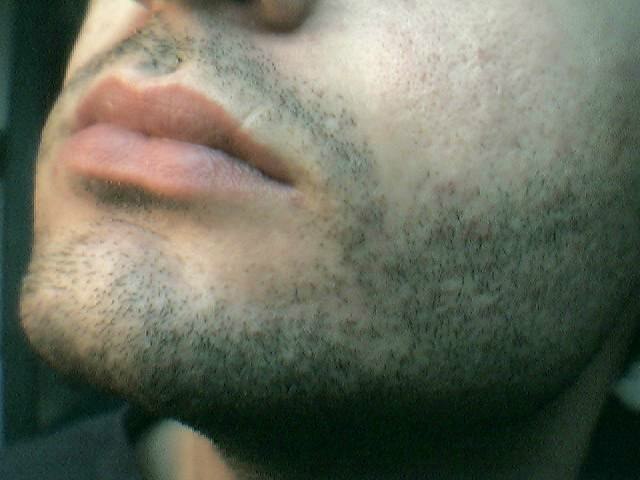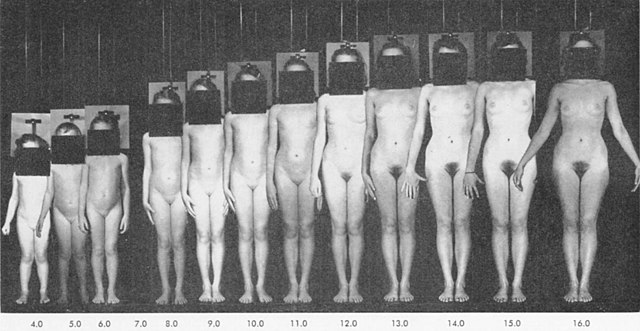Puberty is the process of physical changes through which a child's body matures into an adult body capable of sexual reproduction. It is initiated by hormonal signals from the brain to the gonads: the ovaries in a female, the testicles in a male. In response to the signals, the gonads produce hormones that stimulate libido and the growth, function, and transformation of the brain, bones, muscle, blood, skin, hair, breasts, and sex organs. Physical growth—height and weight—accelerates in the first half of puberty and is completed when an adult body has been developed. Before puberty, the external sex organs, known as primary sexual characteristics, are sex characteristics that distinguish males and females. Puberty leads to sexual dimorphism through the development of the secondary sex characteristics, which further distinguish the sexes.
Development of a male from childhood to the end of puberty
Male at 11.3 yo (prepubertal), 12.5 yo, 14.9 yo and 16.3 yo (post pubertal)
Facial hair of a male
Development of a female from childhood to the end of puberty
An adult is a human or other animal that has reached full growth. The biological definition of the word means an animal reaching sexual maturity and thus capable of reproduction. In the human context, the term adult has meanings associated with social and legal concepts. In contrast to a non-adult or "minor", a legal adult is a person who has attained the age of majority and is therefore regarded as independent, self-sufficient, and responsible. They may also be regarded as a "major". The typical age of attaining legal adulthood is 18, although definition may vary by legal rights, country, and psychological development.
An adult human male (left) and female (right)





